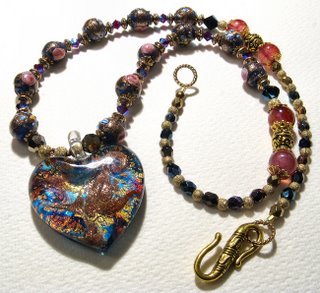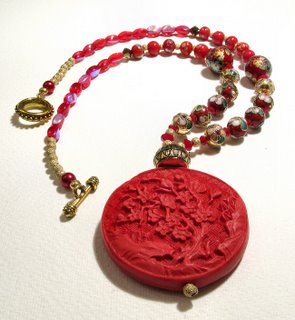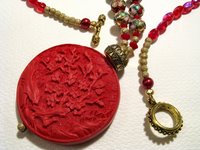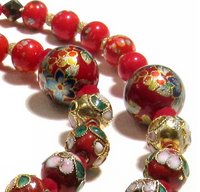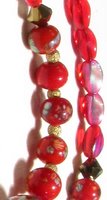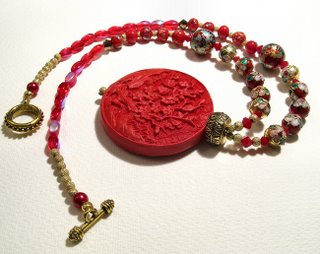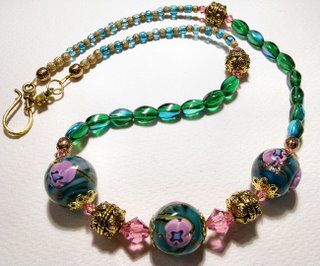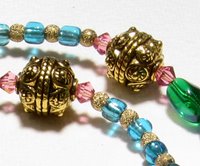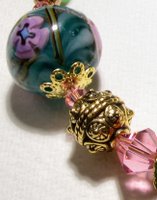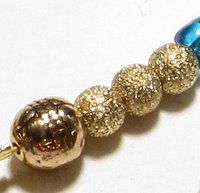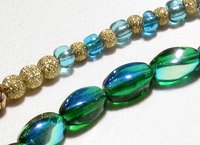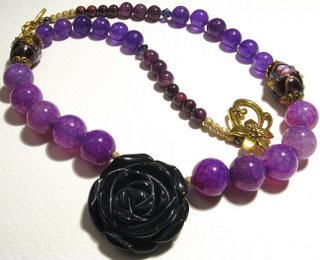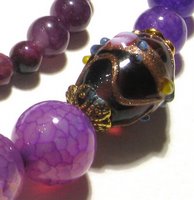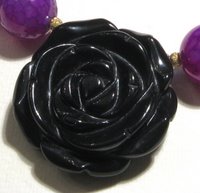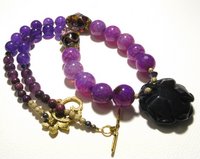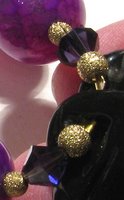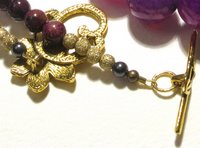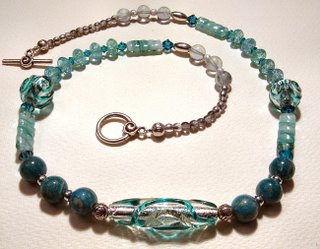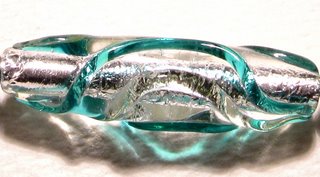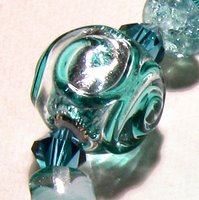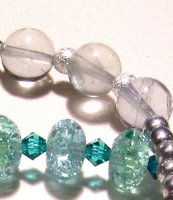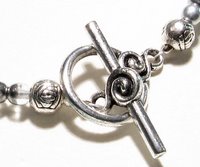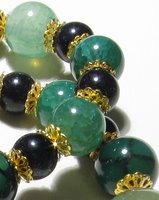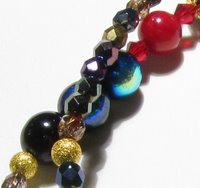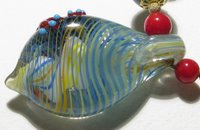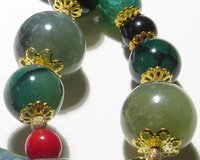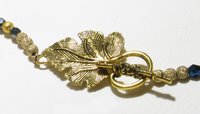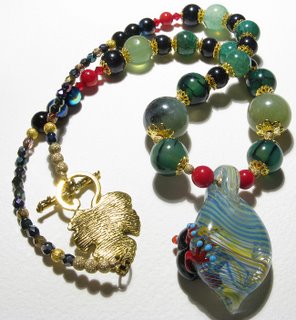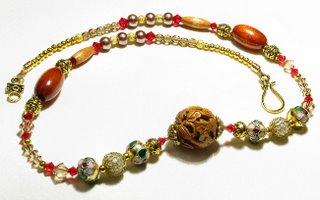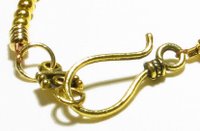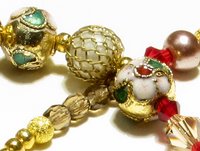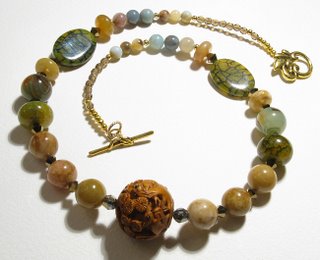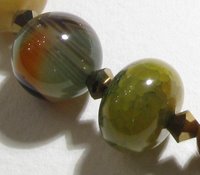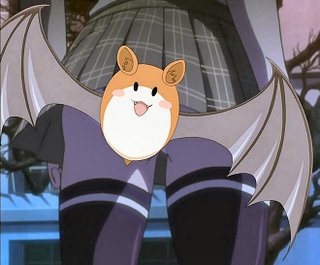At first I thought about calling it Valentine's, as a very obvious reference to the upcoming date, but then I thought: "Wait a sec, these colours are not Valentine-ish at all and, if anything, a bit on the darker side..." And I realised that it was a twilight, dusky piece, thus La Penombra.
The main bead is an Antica Murrina pendant, which I bought for myself two or three years ago and never used because I did not have a proper necklace to hang it to (mine are either too thin, or too thick!). It came in a nice velvet pouch and has the Antica Murrina certificate still.
I also used some tiny wedding cake beads that I have recycled from a necklace bought on eBay, an interesting vintage piece that seemed to be either a choker or maybe a little girl's necklace. At any rate it was too short and the links were getting tarnished. Also the clasp did not work anymore. Then I reused the beads. Actually, I bought it with the purpose of recycling already in mind.
This is La Penombra:
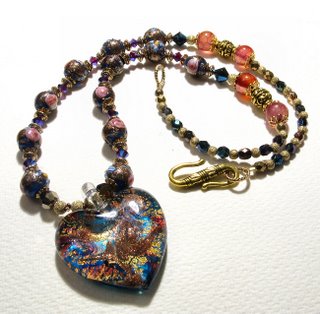 I guess it is easy to see why it is called Penombra. The colours are those you see after a sunset and the heart looks like a twilight sky: blue, gold, crimson, peach. Besides the Murrina heart, I have also used here:
I guess it is easy to see why it is called Penombra. The colours are those you see after a sunset and the heart looks like a twilight sky: blue, gold, crimson, peach. Besides the Murrina heart, I have also used here:- Twelve small blue vintage wedding cake Murano beads with gold foil and pink forget-me-nots;
- Several Swarovski bicones in different sizes;
- Two round Dorado Swarovski faceted round beads;
- Four medium dragon veins in a shade of pink guava;
- Smal faceted Czech Fire beads in shades of blue, gold, purple;
- Stardust bronze plated round spacers;
- Antique bronze small disc spacers;
- Gold plated filigree bead caps for the dragon veins and smaller ones for the wedding cakes;
- Two antique bronze ornated Bali beads and S-hook clasp.
Some close-ups...


A close-up of the Murrina heart, placed over three stardust beads and crimps to lock it in place. Some of the Swarovski round beads can be seen as well. And the surface of the heart, magnified to show the colors and gold foil, which also reminds me of a galaxy, the xplosion of a supernova, things like that!


On the 1st picture we can see some of the dragon vein beads in detail, along with the antiqued bronze beads and filigree bead caps. We can also see the Swarovski bicones and stardust spacers interspersed with the stardust balls. On the 2nd picture, the tiny wedding cakes in detail and more of the dragon veins and Swarovskis bicones, with a lovely AB (Aurora Borealis) reflection.
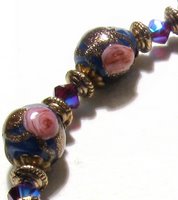

Another detail of the wedding cakes, Swarovskis and bronze disc spacers, along with the S-hook clasp.
And to finalise for today, another view of Penombra...
